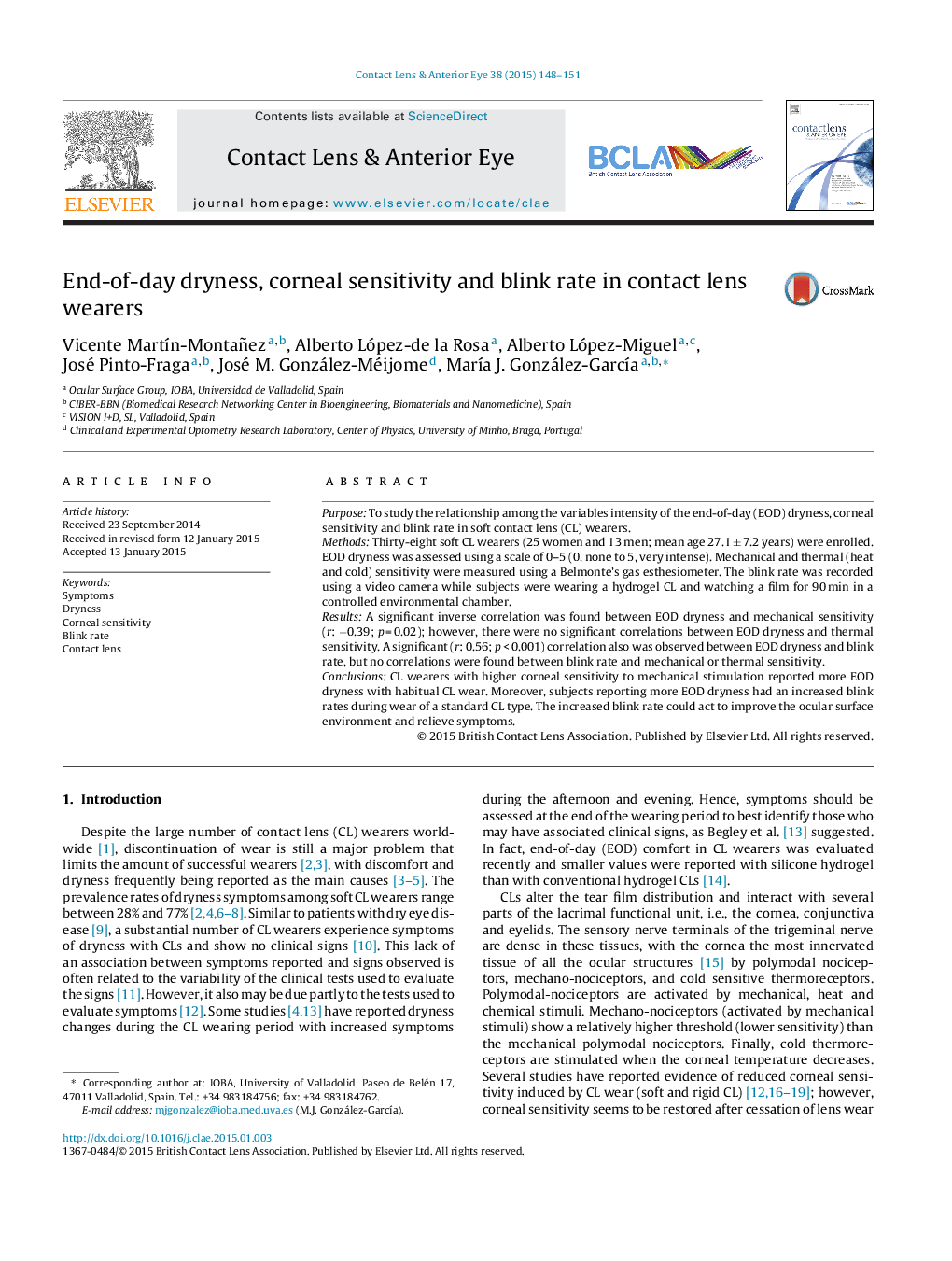| Article ID | Journal | Published Year | Pages | File Type |
|---|---|---|---|---|
| 2692946 | Contact Lens and Anterior Eye | 2015 | 4 Pages |
•Corneal sensitivity to mechanical stimulation is related to EOD dryness.•Subjects reporting more EOD dryness show increased blink rates during CL wear.•The blink rate could be increased to relieve symptoms on the ocular surface.
PurposeTo study the relationship among the variables intensity of the end-of-day (EOD) dryness, corneal sensitivity and blink rate in soft contact lens (CL) wearers.MethodsThirty-eight soft CL wearers (25 women and 13 men; mean age 27.1 ± 7.2 years) were enrolled. EOD dryness was assessed using a scale of 0–5 (0, none to 5, very intense). Mechanical and thermal (heat and cold) sensitivity were measured using a Belmonte's gas esthesiometer. The blink rate was recorded using a video camera while subjects were wearing a hydrogel CL and watching a film for 90 min in a controlled environmental chamber.ResultsA significant inverse correlation was found between EOD dryness and mechanical sensitivity (r: −0.39; p = 0.02); however, there were no significant correlations between EOD dryness and thermal sensitivity. A significant (r: 0.56; p < 0.001) correlation also was observed between EOD dryness and blink rate, but no correlations were found between blink rate and mechanical or thermal sensitivity.ConclusionsCL wearers with higher corneal sensitivity to mechanical stimulation reported more EOD dryness with habitual CL wear. Moreover, subjects reporting more EOD dryness had an increased blink rates during wear of a standard CL type. The increased blink rate could act to improve the ocular surface environment and relieve symptoms.
